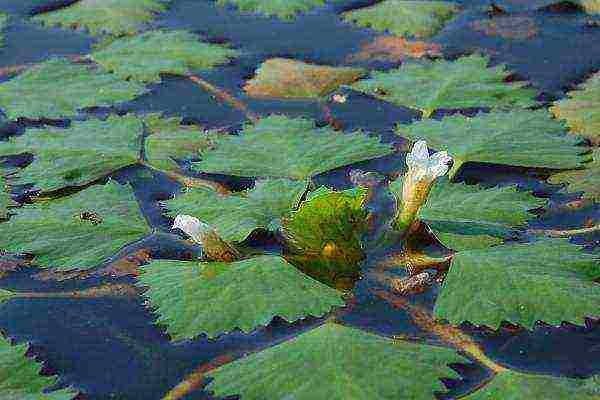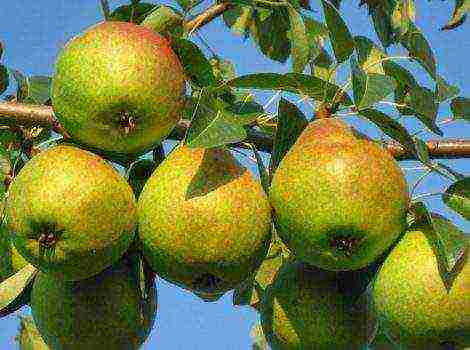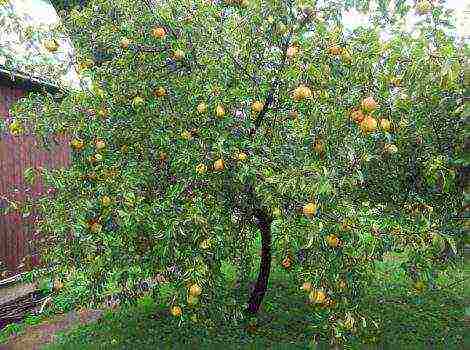Content
Detailed Scripture of Water Chilim Nut
The flora of our planet is diverse and amazing. It would seem that everything has long been studied and known. But from time to time, each person discovers something new and unusual from the plant world.
One of these discoveries for many was water nut is a unique plant with a long history and healing properties.
Botanical description of water walnut, ripening season
The water nut has different names, the most common are chilim and floating flyer.
Small water walnut: up to 2-2.5 cm in diameter, up to 4 cm in length.It has from 2 to 4 long shoots, similar to curved horns, therefore the plant is popularly also called a damn nut.
The plant blooms in early to mid-summer white small flowers. Chillim flowers bloom for only a few hours. In place of flowers, drupes of fruits ripen in autumn - from 5 to 12 pieces on each plant.

Inside the black-brown fruit, one seed is formed, occupying the entire internal space. The property of the seed is surprising to maintain its viability for a long time.
Reproduction and distribution of chilim occurs precisely with the help of fruits, which are carried by the current and expand the area of the plant.
The spread of seeds also occurs with the help of animals - the horns of the fruits cling to the wool of animals that have entered the watering hole, and are transferred to other places.
The damn nut belongs to aquatic annuals, being a representative of the Rogulnik genus and the Derbennikov family. Its stem grows in the spring from a fruit that has fallen to the bottom of the reservoir.
The length of the flexible stem reaches 3.5-5 m, and when the water level rises, the stem can separate from the bottom and develop in the water column. When the water level drops and the roots sink to the bottom, the plant will take root again.
Two types of leaves grow on the stalk of chilim.... Linear, opposite leaves form along the stem, which is in the water column. The second type of leaves is a beautiful multi-tiered rosette floating on the water surface.
Leathery leaves are oval or diamond-shaped with denticles along the edges, very similar to birch leaves. The length of the petioles is 5-9 cm, and by the time the fruits ripen, air cavities (swim bladders) are formed on the petioles, providing additional buoyancy to the rosette.
In the autumn season, ripe fruits sink to the bottom.and the plant dies off. With the onset of spring, the growth of the water nut begins anew.
Habitat and habitat of Chilim
The history of the emergence of the water nut is more than 25 million years old. Paleontologists have discovered chilim fruits in layers of the earth, the age of which corresponds to the Neogene era.
Even primitive people used relic nuts for food... According to some sources, three thousand years ago in China, the plant was specially bred for medicinal and culinary purposes.
In ancient times, the flyer played the role of one of the main food products. Archaeologists during excavations of settlements dating from the X-XII centuries have discovered large reserves of devil's nuts.
In Russia, they were eaten raw, boiled, dried or baked. in the fire, flour was ground from dried fruits. The plant was distributed on the territory of present-day Russia and Ukraine almost until the end of the 19th - beginning of the 20th century.
Since that time, chilim began to gradually disappear due to massive catches, changes in climatic conditions and the qualitative composition of water bodies.

Today, chilim grows in the vastness of Africa and Asia.... The Asian range includes Japan, India, Pakistan, China, Vietnam and Turkey.
On the territory of the former Soviet Union, the plant is found in Georgia, Kazakhstan, the European part of Russia, in the Far East, in the south of Western Siberia and in the waters of the Dnieper basin.
The water nut lives in stagnant lakes and swamps, floodplains of slow-flowing rivers with fresh water and a muddy bottom.
Chilim grows in ecologically clean reservoirs, forming continuous thickets, in the polluted plant dies out. Rogulnik is sensitive to fluctuations in water temperature and illumination and is a kind of marker characterizing the state of lakes and rivers.
Composition and nutritional value of water chestnut
White kernels of fucking nuts are not only tasty, but also healthy. The calorie content of the fruit is relatively low - 200 kcal per 100 g, which allows supporters of proper nutrition and those who care about the figure to eat them.
Nutritional value per 100 g of product is:
- proteins - 11.9 g;
- fats - 3.4 g;
- carbohydrates - 55.4 g;
- water - 10.4 g;
- ash - 2.4 g.

The healing properties of chilim are explained by the content of a wide range of nutrients. All parts of the water nut contain:
- flavonoids;
- phenolic compounds;
- triterpenoids;
- tannins;
- nitrogenous compounds;
- glucose;
- minerals: manganese, calcium, iron, phosphorus, magnesium and chlorine.
Beneficial features
If in our regions the water nut is not so popular as a remedy, then in the vastness of Asia, traditional medicine cannot do without it.
There is probably not a single disease for the treatment of which Tibetan monks and Chinese healers would not use a roguelike.
List of indications for medical use pretty big:
- diuretic (diuretic) - used to treat the kidneys and genitourinary system;
- antimicrobial and antiviral - helps to get rid of gonorrhea, herpes, follicular and purulent tonsillitis;
- fixing - fresh fruits or freshly squeezed juice are eaten for diarrhea;
- antitumor - heals tumors of various nature;
- choleretic - activates the liver and gallbladder;
- astringent - accelerates wound healing;
- antispasmodic - relieves pain and spasms;
- tonic - increases vitality and performance;
- sedative - soothes and helps fight stress;
- fortifying - helps to recover from severe ailments.

Rogulnik-based drugs have proven themselves well in treatment atherosclerosis, impotence, eye diseases, toothaches, insect and snake bites.
For medical purposes, use not only the kernels of the nuts, but also the stems, flowers and leaves. Freshly squeezed juice, alcoholic tinctures, steam bath tinctures and decoctions are prepared from chilim.
Chilim vodka tincture used to cleanse blood vessels. For this, 10 kernels of a nut are poured with a glass of vodka and infused for 10 days.
The tincture is taken three times a day for 1 tbsp. l. The course of treatment lasts 10 days, repeated treatment is carried out after a 10-day break.
Fresh water nut juice lubricate the herpes blisters on the lips and itchy insect bites. Juice diluted with water (10: 1) gargle with sore throat and oral cavity.
Cosmetologists use water walnut infusion for the treatment of acne and skin inflammations.
"Nut" recipes
As already mentioned, the delicious and juicy fruits of the roguelite eaten raw or boiled in salted water... When baked, the delicacy tastes like fried chestnut.
The flour obtained by grinding dried fruits is added to bread, flat cakes and pancakes. The pulp of the seeds is used in salads, snacks and confectionery.
Cooking dishes with water nuts is available mainly to the population of Asian and African countries. Those who are fortunate enough to purchase these unique fruits can try the most popular recipes in their kitchen.
Water walnut wrapped in bacon... This dish is more complicated and requires 240 g of canned water nuts.
Cut dry-cured bacon (1.5 kg) into slices, wrap a nut in each and secure with a toothpick. If the fruit is very large, it can be cut into two halves. Put the bacon in a baking dish.
In a saucepan, combine 1 cup ketchup, 1 cup brown sugar, and 1 teaspoon Worcester sauce, and heat to a boil. Pour the hot sauce over the bacon, put the mold in the oven preheated to 180 ° C. Bake until tender for 45-50 minutes.

Water walnut puree... To prepare mashed potatoes, you need to peel and cut 200 g of fruits. Put chopped fruits in a saucepan and pour 150 g of milk. Cover the pan with a lid and cook for 30-40 minutes.
At the end of cooking, rub the walnut pieces through a sieve or crush with a crush, add milk in which the fruits were cooked, butter and sugar to taste. Warm up the resulting mass, stirring so that it does not burn.
The ready-made puree is used as a side dish for meat dishes.
Stewed chillim with apples... Peel 100 g of chillim, pour boiled water and simmer under the lid. Peel 100 g of apples and cut into wedges.
Add apples to chillim, put butter and sugar in a saucepan to taste. Simmer all together until the fruit is tender.
Store water walnut fruits in a cool place. (refrigerator or cellar), previously wrapped in a cotton cloth.
Peel nuts just before cooking.otherwise, peeled fruits quickly lose their taste.
Seeing on the water surface a spectacular rosette of rogulnik leaves, you should know that this is not some kind of aquatic weed, but a wonderful plant with nutritious fruits and unique medicinal properties.


